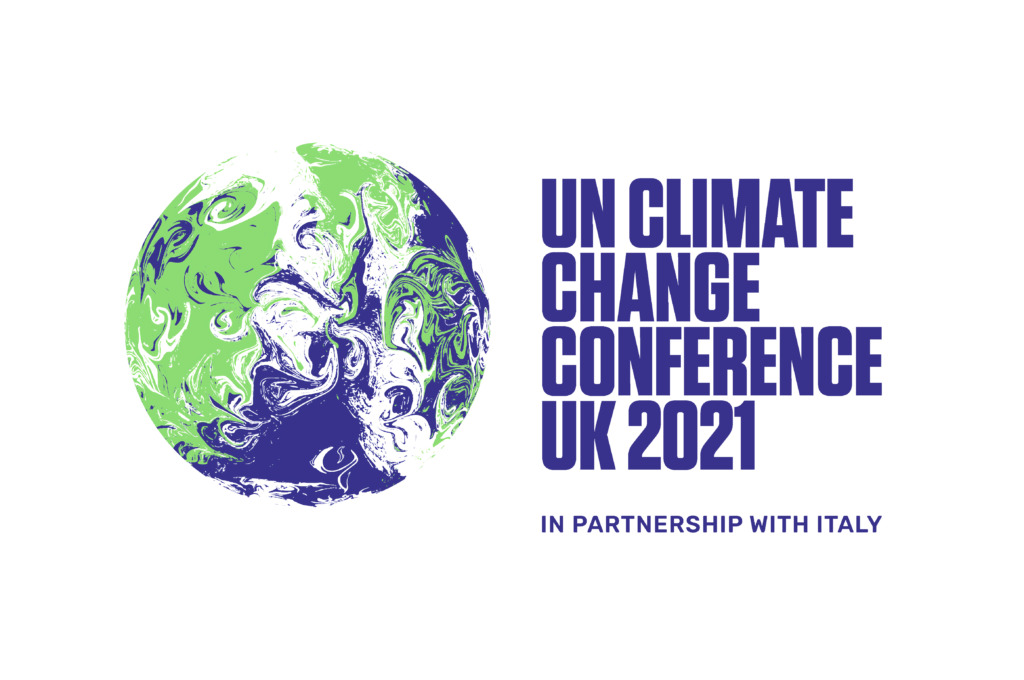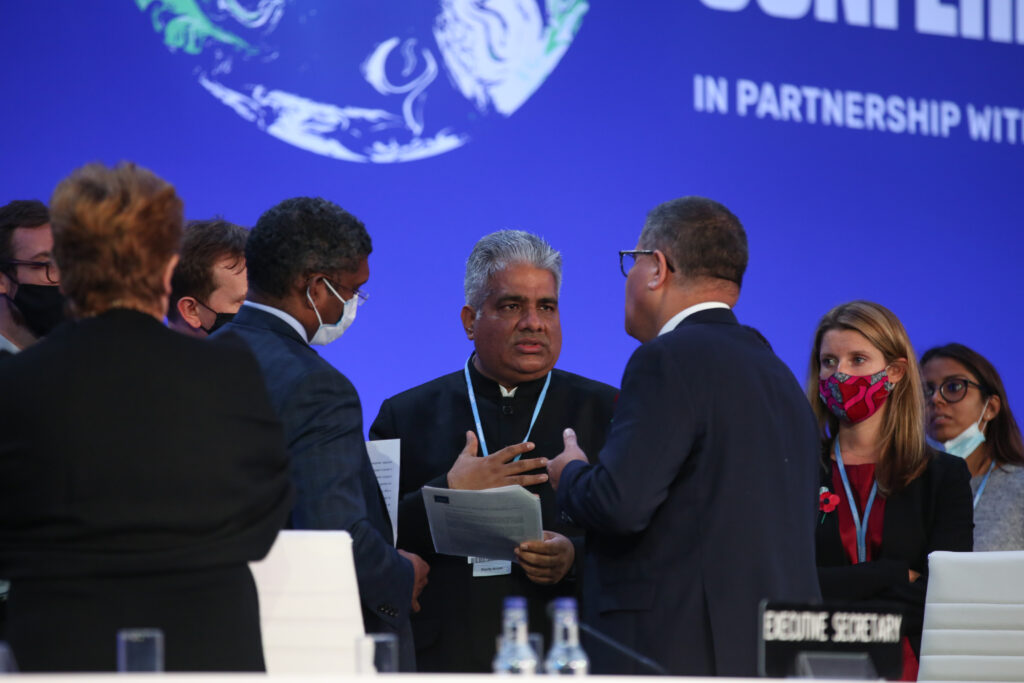COP26 has reunited in Glasgow to elaborate on an international agreement aiming to limit climate warming to 2°C. Since this objective was signed in Paris during COP21, nothing seems to have happened.

This paper explores COP26, its objectives, goals and results. COP26 was the last international conference on climate and was the perfect occasion to make further progress after the covid-19 pandemic.
What is COP26?
The conference organised by the United Nations on climate change, also known as COP26, happened in Glasgow on The 31st and 13th of November 2021. This meeting reunited 197 countries which are members of the united nations framework convention on climate change. COP26 objectives are the following:
- Ensure the net elimination of greenhouse gas emissions by mid-century and keep 1.5°C warming within reach.
- Adapt to protect communities and natural habitats.
- Mobilise funds.
- Accelerate cooperation between governments, businesses and civil society.
Each country participating in COP26 is expected to present ambitious targets and plans to reduce emissions by 2030 to reach zero by mid-century. Governments will have to develop strategies to stop using fossil fuels for energy production, revolutionise transport and put policies to protect the natural environment.
Protecting the natural environment is essential because ecosystems not only provide services such as drinking water and storm protection. But also the beauty and diversity of nature. To achieve these goals, COP26 must organise and obtain sufficient financial resources to invest in projects and finance the transformation of society.
By investing $100 billion a year in climate finance at COP26, the transition to global net zero can begin. Finally, these goals must be defined and agreed to by all countries to ensure progress. COP26 wants to achieve this by agreeing on a regulation that all nations will accept.
What were the results of COP21 in Paris?
During COP21 in Paris, the Paris Agreement was negotiated. It is an agreement signed by 195 countries which have agreed on the objective of keeping the increase in global temperature below 2°C. The agreement requires each country to produce a plan on how it will reduce its emissions to required levels, but does not specify emissions targets.
The Paris Agreement has been criticised as not going far enough, despite providing a solid platform for countries to succeed. If the Paris objectives were maintained as they stand, warming would be greater than 3 degrees before 2100.

Challenges
What is the current state of the climate ?
Since 1750, concentrations of greenhouse gases in the atmosphere have increased. After 2015, the concentration of CO2 in the atmosphere exceeded 400 ppm. Since 1970, each decade has been warmer than the previous one, and the average global surface temperature is more than 1°C warmer than 100 years ago. It is unequivocally human activity that has altered precipitation patterns, melted sea ice at the North Pole and acidified the ocean. In addition, the sea level is now rising by nearly half a centimetre per year.
These climate changes have disrupted ecosystems and shifted biospheres towards the poles. Disruption of these ecosystems leads to biodiversity loss at a rate never seen before. The likelihood of occurrence of heat waves, floods, typhoons and droughts has increased. Due to human activity and its attribution to human activities only increases over time. At the current rate of change (RCP6), the climate would have warmed 3°C above pre-industrial levels.
This is an intermediate scenario in which extreme weather events, a large-scale loss of agricultural land, loss of freshwater sources and widespread ecosystem collapse would lead to widespread suffering and instability. According to the World Bank, society is unlikely to be able to adapt to such changes. Since these increases are incompatible with a global community, it is highly likely that human civilisation will come to an end.
Where are we going ?
Scientists have made different predictions based on different scenarios in which countries adopt policies that would reduce, maintain or increase the current level of greenhouse gas emissions. However, despite this, global surface temperatures will continue to increase until at least 2050 under all emission scenarios.
In Europe, the regional changes will be as follows:
- A higher temperature rise in Europe than in the rest of the world.
- Increased frequency and severity of heat waves.
- Reduced cold spells and frost days.
- Changing precipitation patterns will increase the risk of flooding in northern Europe and the risk of drought in southern Europe.
- Coastal flooding and erosion will increase with sea level rise.
- Snow cover and glacier area will collapse.
What should we have expected from COP26 ?
The stated objective of COP26 is to “ensure global net zero and keep 1.5°C within reach”. As things stand, the policies adopted in Paris are insufficient to prevent climate change’s consequences. Because the warming would only be limited to 3°C. However, drastic changes need to be made to keep warming below 2°C. And if warming is to be held to 1.5°C, global emissions must be halved over the next decade and reach net zero by 2050.
Le climat que nous connaîtrons à l’avenir dépend des décisions que nous prenons aujourd’hui
At COP26, countries are expected to update their 2030 targets to limit temperature rise to 1.5°C. Suggested ways to achieve this include accelerating the transition from coal to clean electricity generation, protecting and restoring nature for the benefit of people and the climate, and finally accelerating the shift towards zero-emission vehicles.
How can COP26 help ?
COP26 will have to coordinate national governments and non-state actors such as cities, multinationals, universities and civil society. By blending the approach of all these actors towards the same objective, progress can be made. There can also be pressure on governments to improve their national decarbonisation plans.
COP26 will review national climate plans and encourage countries to set their own targets and actions. And once all the plans are released, all parties can identify the gaps and decide how to address them. An essential aspect of these national plans is financing climate projects in less developed countries.
Countries can also ensure that the Paris Agreement is relevant and sufficient to achieve the set goals. If not, the agreement will need to be updated. This will ensure that the Paris Agreement can get actors back on track to meet climate demands.
Finally, the British government, the host of the conference, presented the four objectives it wishes to see achieved by all the other participants in the conference. It is about the commitment of all countries to achieve zero emissions by 2050, the protection of vulnerable people in a warming world, increased collaboration between all sectors of society and, finally, the fulfilment of the $100 billion climate finance pledge.

Who mentioned biochar ?
All products, services and behaviours must be considered to achieve meaningful reductions in greenhouse gas emissions. Biochar can help replace some products and provide new services. Specifically, it can replace fossil ingredients in construction or manufacturing and provide new solutions for maintaining crop yields in a warming world. In doing so, the biochar will sequester carbon in a stable form, contributing to emission reductions and COP26 goals.
The other options
Five other carbon sequestration technologies are available and should be considered in addition to biochar. First, there is afforestation. Trees absorb CO2 from the atmosphere as they grow. This is an interesting but risky way of natural carbon sequestration, as fifty years of forest growth can quickly be lost during a fire. And once the forest is mature, it no longer absorbs large amounts of CO2.
It is also possible to use soil to accumulate carbon in soil organic matter. This method relies on a fundamental change in farming practices, but it has the ability to sequester very large amounts of carbon. It is also possible to use enhanced weathering, where carbon is mineralised from the reaction between certain crushed rocks and the atmosphere. A careful life cycle analysis is necessary, but it is likely to be an effective option if done correctly. If CO2 emissions from biomass combustion can be sequestered underground or in an inaccessible form, this option could be useful for generating energy and sequestering carbon.
DACCS
But the use of such systems would be severely limited by the availability of biomass and geology. Direct airborne carbon capture and sequestration would allow (DACCS) to extract CO2 directly from the air and store it underground. It’s a technology most people imagine when they think of CO2 capture, but deploying such a power-intensive process at scale will be difficult.
Biochar alone will never be a panacea for humanity when it comes to carbon storage. However, it is an excellent example of a climate-neutral product that can have many benefits when used in the right circumstances. In reality, these technologies will need to be deployed on a large scale to sequester carbon dioxide from the atmosphere. It’s tempting to expect a single technology to solve the monumental problem of climate change, but that expectation is misplaced. Like the multifaceted approach of nation-states to climate change, carbon sequestration will need to be complemented by all of these technologies.
So what really happened at COP26 ?
COP26 lasted a day longer than expected, with ministers from the 196 nations involved in the negotiations scrambling to agree on a final text. Some of the four objectives set before the conference have been achieved. Progress has been made in financing developing countries. They are increasing the frequency of country progress updates and increasing emissions reduction commitments.
A promise to reduce emissions by 45% by 2030 was made in the final text. However, in the same text, it is recognised that under existing national emission reduction commitments and policies, carbon dioxide emissions will actually increase by 14% over the same period.
This disparity shows the magnitude of the changes that need to be made and the lack of real progress by individual nations in reducing their carbon dioxide emissions. With current policies, the world is on track to experience a global temperature increase of 2.4°C. Which would be catastrophic for society. To reach the 1.5°C target, developing and middle-income countries must make a much greater effort.

We’re almost there, but last-minute intervention by several coal-dependent countries has diluted the conference deal, much to the disappointment of many. Source : UNclimatechange
The controversy around charcoal
A controversy erupted at the last minute. China and India have refused to sign the deal unless its terms are changed so that they can continue to subsidise the construction of new coal-fired power plants. The countries most exposed to climate change greeted this last-minute change with great disappointment.
However, an important development was the recognition of carbon markets as a necessary tool to stimulate carbon dioxide reduction and the adoption of rules for the operation of these markets. This development will stimulate the development of projects that will reduce the amount of carbon dioxide in the atmosphere. This is a very important aspect of climate change mitigation.
Despite the lack of agreement on the use of mineral coal, the final text produced at COP26 continues the slow but steady progress of the issue of climate change mitigation in the political sphere. There is still a lot of mistrust between developing nations and the developed world, but some progress has been made in climate finance.

Written by Thomas Harcourt
Thomas is a biochemist which has 5 years of experience within the industry. He finished his Phd in vegetal biochemistry at the University of Sheffield in 2015.


